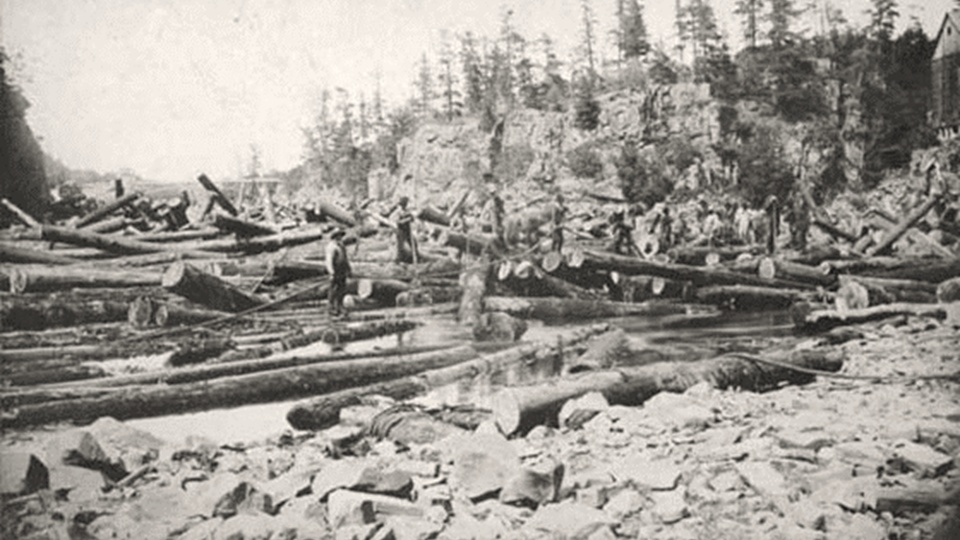Rise of the Lumber Industry
Up until the 1870s, most of the land of the Pocono plateau was pristine forest. The area was full of large trees and dense swamp. The Native Americans called the area that is now Stillwater Lake "Klampeechen Chuppecat," which translates to “deep, dark swamp.” Those early, original inhabitants were the “Minsi” tribe of the Leni-Lenape Indians.
As new settlers established themselves on the Pocono Plateau starting in the early 1800s, the rich resource of timber brought lumbermen to the mountain. The swamp area itself was fully cleared of all timber, and its water supply and topography provided opportunity for a man-made dam to be built.

Although the exact date of the dam construction is unknown, it was built prior to 1871. First known as "Tunkhannock Lake," the initial purpose of this lake was to provide a water vehicle for timber to flow to the already built Pocono Lake. Known as a "splash dam," the dam would be breached and the resulting flood would carry the logs downstream to the saw mill.
During this time, businessmen from New York City and the surrounding areas began buying up the land from local residents and clear-cutting the plateau to harvest the lumber. The small stream that ran through the swampy area was soon dammed to create a lake.
By the 1830s, lumbering was taking place on a massive scale throughout the region. By 1860, Pennsylvania, with over 28-million acres of land (much of which was densely forested) had become America's lumbering champion.